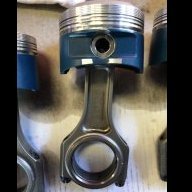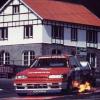Announcements
-
Similar Content
-
Latest Posts
-
att.4QNbuJlz_gNZPFBGFqeEvxSUHXkGt7z40V59MrtXTPg.mp4
-
Plan on the day will be to park trackside. Depending on space availability we will try put a small shade tent and a few of the cars on top of the hill inside turn 3, this is an easy to get to parking area with views of Turn 2, Turn 3, Turn 4 and Turn 5 and limited other pieces of the view around the track. IMPORTANT NOTE! One consideration from previous years is from memory the trackside parking sells out before the admission tickets, for that reason I encourage anyone planning on coming to buy tickets for parking now via the official website; https://www.worldtimeattack.com/ The type of parking you are looking for is 2 Day Park & View (Access Around Venue) Vehicle Pass Only Please note this does not include admission to the event itself, remember to grab that also, and kids under 12 get in for free!
-
This is going to be a mid week evening cruise. Come along and join us for a drive out to Palm Beach. This is a change of event plans after talking to some of the older members of the club. SAU NSW is planning on hitting Old Pac again shortly, stay tuned for details. When: Thursday 26th of June Time: 7:30pm meet/8:00pm departure/10:00pm finish Meet: Spit West Car Park / Spit Rd Mosman NSW 2088 Destination: Palm Beach Public Parking / 16 Ocean Rd Palm Beach NSW 2108 Up to date information as always can be found on the events page of our website, the link for this event is https://www.saunsw.com.au/events/palm-beach-cruise There will be a lead and follow car so no one should get lost. If you would like to attend or bring others along please put your name down and a +1 as numbers will be needed prior! This is NOT a race and we will all be adhering to all road rules. If this is what you want please come to one of our track days. This is an official SAUNSW event and will be run under a Motorsport Australia permit. One of the things that really sets our club apart is our commitment to being true enthusiasts. When on normal roads we strive to maintain good relations with the authorities as well as the public in general. When attending one of Skylines Australia NSW events please try to: • Be aware of surrounding environment and act accordingly. • Drive courteously on the state’s roads as a true enthusiast should. • Understand how important it is to maintain the good name of SAU:NSW and thus, treat others accordingly. • Any misbehavior will not be tolerated and you will be asked to leave. Thanks guys and hope to see you there!
-
Not in any way aroused by any of those, except maybe the big AMGs. And that would break my never a Euro, ever, rule.
-






Recommended Posts
Create an account or sign in to comment
You need to be a member in order to leave a comment
Create an account
Sign up for a new account in our community. It's easy!
Register a new accountSign in
Already have an account? Sign in here.
Sign In Now